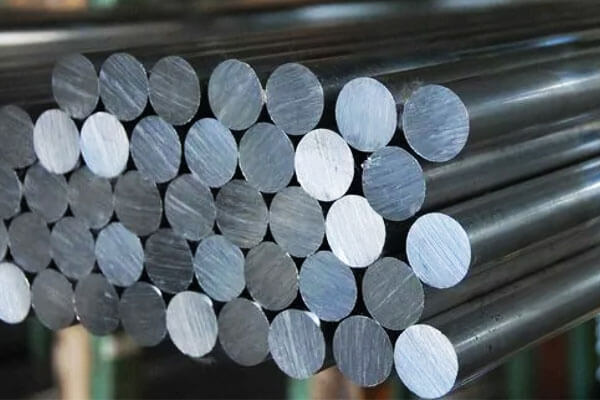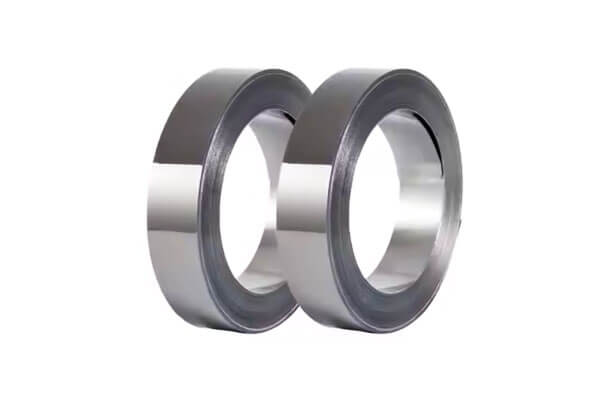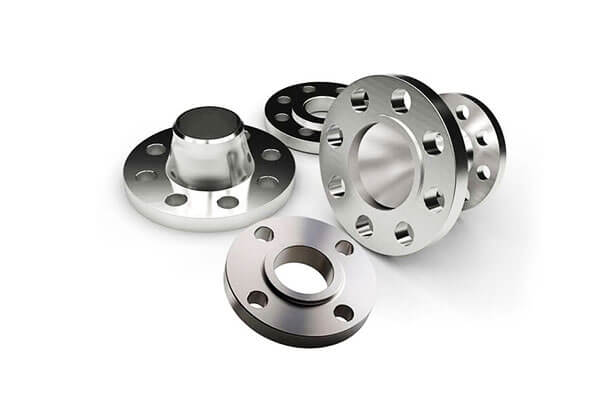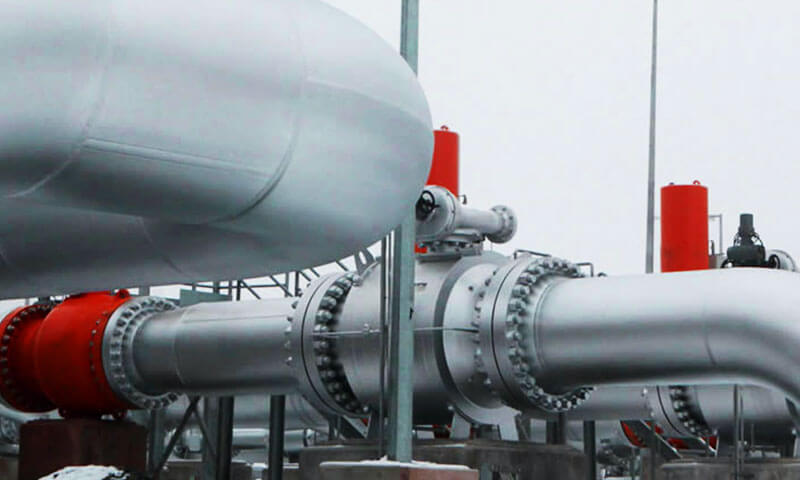1. Вступ
Nickel-based alloys have long been the foundation of high-performance materials used in extreme environments.
Their ability to withstand високі температури, окислення, і механічні навантаження makes them indispensable in аерокосмічний, Генерація живлення, і промислове застосування.
Серед цих сплавів, Нікелевий сплав 75 (2.4951) has earned a reputation for its exceptional thermal stability, Опір повзучості, і корозійна стійкість
Originally developed in the 1940s for the Whittle jet engine turbine blades, this alloy has continued to prove its reliability and versatility в різних галузях.
Its unique combination of механічна міцність, термічна стабільність, і простота виготовлення makes it an attractive choice for applications requiring long-term durability in high-temperature environments.
This article provides an in-depth technical analysis of Nickel Alloy 75 (2.4951), covering:
- Chemical composition and microstructure, explaining how each element contributes to its superior properties.
- Фізичний, термічний, and mechanical characteristics, detailing its performance under extreme conditions.
- Manufacturing techniques and processing challenges, highlighting the best fabrication methods.
- Industrial applications and economic feasibility, demonstrating its widespread use.
- Future trends and technological advancements, exploring the next phase of alloy development.
By the end of this discussion, readers will have a comprehensive understanding of Alloy 75 and why it remains a preferred material for demanding engineering applications.
2. Хімічний склад та мікроструктура
Primary Constituents and Their Functions
Нікелевий сплав 75 (2.4951) є a nickel-chromium alloy призначений для moderate high-temperature applications.

The following table outlines its key alloying elements and their contributions to material performance:
| Елемент | Склад (%) | Функціонування |
|---|---|---|
| Нікель (У) | Балансувати (~75.0%) | Provides oxidation and corrosion resistance, ensures thermal stability. |
| Хром (Cr) | 18.0–21,0% | Enhances oxidation and scaling resistance, strengthens the alloy. |
| Титан (На) | 0.2–0.6% | Stabilizes carbides, improves high-temperature strength. |
| Вуглець (C) | 0.08–0,15% | Forms carbides to enhance hardness and creep resistance. |
| Прасувати (Феод) | ≤5.0% | Adds mechanical strength without compromising corrosion resistance. |
| Кремнію (І), Марганець (Мн), Мідь (Куточок) | ≤1,0%, ≤1,0%, ≤0.5% | Provide minor processing benefits and oxidation resistance. |
Microstructural Analysis
- З FCC (Гранецентрований куб) кристалічна структура ensures high ductility and fracture toughness, which is essential for thermal cycling applications.
- Titanium and carbon form carbides (TiC, Cr₇c₃), significantly increasing the alloy’s creep strength at elevated temperatures.
- Microscopic examination (ЯКИЙ, TEM, and XRD analysis) confirms that uniform grain structures contribute to improved fatigue resistance.
3. Physical and Thermal Properties
Basic Physical Properties
- Щільність: 8.37 g/cm³
- Діапазон плавлення: 1340–1380°C
- Електричний опір: 1.09 mm²/m (higher than stainless steel, making it ideal for heating elements)
Thermal Characteristics
| Майно | Значення | Значимість |
|---|---|---|
| Теплопровідність | 11.7 W/m·°C | Ensures efficient heat dissipation in high-temperature environments. |
| Конкретна теплоємність | 461 J/kg·°C | Improves thermal stability. |
| Коефіцієнт теплового розширення (CTE) | 11.0 мкм/м·°C (20–100°C) | Maintains structural integrity under thermal cycling. |
Oxidation Resistance and Thermal Stability
- Sustains oxidation resistance up to 1100°C, making it ideal for gas turbines and exhaust systems.
- Maintains mechanical strength under prolonged high-temperature exposure, reducing the risk of deformation.
Магнітні властивості
- Low magnetic permeability (1.014 в 200 Oersted) ensures suitability for applications requiring minimal electromagnetic interference.
4. Mechanical Properties and High-Temperature Performance of Nickel Alloy 75
This section provides a comprehensive analysis of Nickel Alloy 75 механічні властивості, behavior under extreme conditions, and testing methodologies to evaluate its long-term performance.
Сила на розрив, Похідна сила, and Elongation
Tensile properties define the alloy’s ability to withstand static and dynamic loading without experiencing permanent deformation or failure.
Нікелевий сплав 75 підтримує high tensile strength and reasonable ductility across a wide temperature range.

Key Tensile Properties
| Температура (° C) | Сила на розрив (MPA) | Похідна сила (MPA) | Подовження (%) |
|---|---|---|---|
| Room Temp (25° C) | ~ 600 | ~275 | ~40 |
| 760° C | ~380 | ~190 | ~25 |
| 980° C | ~120 | ~60 | ~10 |
Спостереження:
- High strength at room temperature ensures excellent load-bearing capacity.
- Gradual reduction in tensile strength with increasing temperature is expected due to softening effects.
- Ductility remains sufficient at elevated temperatures, allowing for stress redistribution without brittle failure.
These properties make Нікелевий сплав 75 suitable for components exposed to high temperatures and mechanical stress, наприклад, леза турбіни, exhaust ducts, and heat exchanger parts.
Creep Resistance and Long-Term Load Stability
Creep is a critical factor for materials used in безперервне застосування при високій температурі. It refers to the slow, time-dependent deformation under constant stress.
The ability to resist creep determines the longevity and reliability сплаву 75 in extreme environments.
Creep Performance Data
| Температура (° C) | Stress (MPA) | Time to 1% Creep Strain (hrs) |
|---|---|---|
| 650° C | 250 | ~10,000 |
| 760° C | 150 | ~8,000 |
| 870° C | 75 | ~5,000 |
Ключові ідеї:
- Strong creep resistance at moderate temperatures (650–760°C) extends component lifespan in jet engines and power plant turbines.
- At 870°C, creep rate increases significantly, requiring careful design considerations for prolonged exposure.
- Сплав 75 outperforms conventional stainless steels, making it a more reliable choice for high-temperature engineering applications.
To further enhance creep resistance, manufacturers often optimize grain size and perform controlled heat treatments, забезпечення microstructural stability during prolonged use.
Fatigue Strength and Fracture Toughness
Fatigue Resistance Under Cyclic Loading
It is a major concern in components subjected to repeated thermal cycling and mechanical stress, such as those in aerospace propulsion systems and gas turbines.
Сплав 75 експонати strong fatigue resistance, preventing premature failure due to cyclic loading.
| Температура (° C) | Stress Amplitude (MPA) | Cycles to Failure (x10⁶) |
|---|---|---|
| Room Temp (25° C) | 350 | ~10 |
| 650° C | 250 | ~6 |
| 760° C | 180 | ~4 |
Fracture Mechanics and Crack Propagation
Nickel Alloy 75’s fracture toughness is relatively high, запобігання catastrophic failure due to crack initiation and propagation.
Однак, microstructural defects, осадження карбіду, and prolonged thermal exposure can influence crack growth rates.
- Intergranular and transgranular fracture modes have been observed in fatigue testing, в залежності від temperature and stress levels.
- Optimized grain boundary strengthening techniques (via controlled cooling rates and minor alloying additions) покращити crack resistance.
Thermal Stability and Oxidation Resistance
Нікелевий сплав 75 призначений для oxidation resistance up to 1100°C, making it suitable for components in combustion environments and high-temperature reactors.
Key Thermal Properties
| Майно | Значення | Значимість |
|---|---|---|
| Теплопровідність | 11.7 W/m·°C | Allows heat dissipation in high-temperature applications. |
| Конкретна теплоємність | 461 J/kg·°C | Ensures thermal stability. |
| Oxidation Limit | 1100° C | Provides excellent surface protection. |
| Коефіцієнт теплового розширення (20–100°C) | 11.0 мкм/м·°C | Reduces thermal stress during heating and cooling cycles. |
Oxidation and Surface Stability
- Хром (18–21%) forms a stable oxide layer, protecting the alloy from high-temperature degradation.
- Low sulfur and phosphorus content minimizes embrittlement in thermal cycling applications.
- Compatible with thermal barrier coatings (TBCs) and aluminized coatings to further enhance oxidation resistance.
5. Manufacturing and Processing Technologies of Nickel Alloy 75
Nickel Alloys – Alloy 75 is widely used in high-temperature applications,
necessitating precise manufacturing and processing techniques to maintain its механічна цілісність, термічна стабільність, and oxidation resistance.
This section explores the primary fabrication methods, heat treatment procedures, проблеми зі зварюванням,
and surface finishing technologies that enhance the alloy’s performance in demanding environments.
Primary Fabrication Techniques
Manufacturing Nickel Alloy 75 components involves кастинг, кування, прокатки, і механічна обробка, each with specific benefits depending on the application.
Кастинг
- Інвестиційне кастинг is commonly used to produce complex aerospace components, Турбінні леза, and exhaust parts.
- Sand casting and centrifugal casting are preferred for large-scale industrial furnace and heat exchanger components.
- Виклики: High-temperature solidification can lead to усадочна пористість, вимагаючи precision control of cooling rates.
Кування та прокатка
- Hot forging enhances grain structure and mechanical properties, що робить його ідеальним для load-bearing components.
- Cold rolling is used to manufacture thin sheets and strips, забезпечення uniform thickness and surface finish.
- Вигоди:
-
- Уточнює структура зерна → Improves mechanical strength.
- Reduces internal defects → Enhances fatigue resistance.
- Enhances workability → Prepares alloy for subsequent machining.
Machining Characteristics
Нікелевий сплав 75 presents помірний обробка difficulty завдяки його high work hardening rate and toughness.
| Machining Property | Effect on Processing |
|---|---|
| Трудове загартування | Cutting speeds must be optimized to minimize tool wear. |
| Теплопровідність (Низький) | Generates excessive heat during machining. |
| Chip Formation | Requires sharp cutting tools with high thermal resistance. |
Best Machining Practices:
- Використання твердосплавні або керамічні ріжучі інструменти to handle the alloy’s toughness.
- працевлаштувати high-pressure coolant systems to manage heat buildup.
- Оптимізувати швидкості різання (30–50 м/i) and feed rates to prevent work hardening.

Heat Treatment and Thermal Processing
Heat treatment significantly influences the механічні властивості, stress resistance, and microstructural stability of Nickel Alloy 75.
Key Heat Treatment Processes
| Обробка | Температура (° C) | Мета |
|---|---|---|
| Відпал | 980–1065°C | Пом'якшує матеріал, знімає стрес, and improves workability. |
| Лікування розчином | 980–1080°C | Dissolves carbide precipitates, homogenizes the microstructure. |
| Старіння | 650–760°C | Enhances creep resistance and high-temperature strength. |
Heat Treatment Advantages:
- Improves grain refinement, enhancing fatigue strength.
- Reduces internal residual stresses, minimizing distortion in components.
- Підвищує опір повзучості, ensuring longevity in high-temperature applications.
Welding and Joining Procedures
Нікелевий сплав 75 можна зварювати різними способами, але controlling heat input and preventing carbide precipitation is crucial for maintaining mechanical integrity.
Виклики зварювання:
- Cracking Risk: High thermal expansion increases residual stress and hot cracking susceptibility.
- Oxidation Sensitivity: Вимагає inert gas shielding (Аргон, Helium) to prevent surface contamination.
- Карбідні опади: Excessive heat input can lead to carbide formation, reducing ductility and toughness.
Рекомендовані методи зварювання:
| Процес зварювання | Переваги | Виклики |
|---|---|---|
| Зварювання TIG (GTAW) | Точний контроль, minimal heat input | Slower than MIG, requires skilled operation. |
| Зварювання MIG (GMAW) | Швидше осадження, good for thick sections | Higher heat input may lead to carbide precipitation. |
| Електронно-променеве зварювання (EMS) | Глибоке проникнення, мінімальне теплове спотворення | High equipment cost. |
✔ Найкраща практика: Термообробка після зварювання (Pwht) в 650–760°C до relieve residual stress and prevent cracking.
Surface Treatments and Coatings
Поверхневі обробки покращити Окислювальна стійкість, Корозійна стійкість, and mechanical wear resistance, especially for components in екстремальних середовищах.
Oxidation-Resistant Coatings
- Aluminizing: Forms a protective Al₂O₃ layer, підвищення oxidation resistance up to 1100°C.
- Thermal Barrier Coatings (TBCs): Yttria-stabilized zirconia (YSZ) coatings provide теплоізоляція in jet engines.
Захист від корозії
- Електропалізація: Enhances surface smoothness, reducing stress concentrators.
- Нікельне покриття: Improves corrosion resistance in marine and chemical processing applications.
Wear-Resistant Coatings
- Plasma Spray Coatings: Додає a ceramic or carbide layer, reducing surface degradation in середовища з високим коефіцієнтом тертя.
- Іон: Hardens the surface for better wear and fatigue resistance.
✔ Найкраща практика: Selecting coatings based on operating environment (температура, механічне навантаження, та хімічна експозиція) ensures maximum durability.
Quality Control and Testing Methods
To maintain high performance and reliability, Нікелевий сплав 75 components undergo strict quality control procedures.
Неруйнівне тестування (NDT)
- X-ray Inspection: Detects internal porosity and voids in cast or welded components.
- Ультразвукове тестування (ЮТ): Evaluates subsurface defects without damaging the material.
- Перевірка проникнення барвника (DPI): Identifies surface cracks in turbine blades and aerospace parts.
Microstructural Analysis
- Scanning Electron Microscopy (ЯКИЙ): Examines grain boundaries and carbide distribution.
- X-ray Diffraction (XRD): Determines phase composition and crystallographic changes Після термічної обробки.
Механічне випробування
- Випробування на розтяг (ASTM E8): Measures yield strength, межа міцності на розрив, і подовження.
- Випробування на твердість (Роквелл, Вікерс): Evaluates surface hardness after heat treatment.
- Creep and Fatigue Testing (ASTM E139, E466): Ensures long-term durability under cyclic and static loads.
✔ Найкраща практика: Implementing a Six Sigma-based quality control system enhances consistency and minimizes defects in high-performance components.
6. Стандарти, Технічні характеристики
Maintaining quality and consistency remains paramount for Alloy 75. Manufacturers adhere to stringent international standards and implement rigorous quality control measures.
Сплав 75 meets multiple international standards, включаючи:
Нас: N06075
British Standards (Брус): HR5, HR203, HR403, HR504
DIN Standards: 17742, 17750–17752
Стандарти ISO: 6207, 6208, 9723–9725
AECMA Pr EN Standards
7. Frontier Research and Technological Challenges of Nickel Alloy 75 (2.4951)
Innovations in Alloy Design
Computational Material Science
Recent advancements in машинне навчання (Мл) and density functional theory (DFT) революціонізують alloy optimization.
Ці computational models reduce the need for traditional trial-and-error methods and accelerate the development of improved materials.
🔹 A 2023 study by MIT’s Materials Research Laboratory used ML algorithms to refine Alloy 75’s titanium-to-carbon ratio, в результаті чого a 15% improvement in creep resistance at 900°C.
🔹 DFT simulations predict phase stability under extreme conditions, забезпечення better oxidation and fatigue resistance in next-generation applications.
Nano-Engineered Precipitates
Scientists are exploring nano-structuring techniques to enhance the механічні властивості of Nickel Alloy 75.
🔹 German Aerospace Center (DLR) has successfully integrated 5–20 nm γ’ (Ni₃Ti) precipitates into the alloy through гаряче ізостатичне пресування (Стегно).
🔹 This nano-precipitate formation improves fatigue resistance by 18%, allowing components to endure 100,000+ thermal cycles in jet engines.
Hybrid Alloy Development
Combining Нікелевий сплав 75 with ceramic composites is emerging as a next-generation material strategy.
🔹 The European Union’s Horizon 2020 program is funding research on карбід кремнію (SiC) fiber-reinforced versions of Alloy 75, leading to prototypes with 30% higher specific strength at 1,100°C.
🔹 This innovation paves the way for hypersonic aircraft, ultra-efficient turbines, and next-gen propulsion systems.
Виробництво добавок (Амор) Breakthroughs
Laser Powder Bed Fusion (LPBF) Advancements
3D printing technologies have transformed Нікелевий сплав 75 component manufacturing, significantly reducing material waste and lead times.

🔹 GE Additive has successfully 3D-printed turbine blades з 99.7% щільність using LPBF.
🔹 Optimized laser parameters (300 W power, 1.2 m/s scan speed) have led to 40% reductions in post-processing costs, while still maintaining ASTM tensile strength standards.
Challenges in Additive Manufacturing
Despite these breakthroughs, residual stress and anisotropic mechanical properties remain major obstacles.
🔹 A 2024 study by the Fraunhofer Institute found 12% variability in yield strength across different build orientations, underscoring the need for post-print heat treatment to homogenize the microstructure.
🔹 Current efforts focus on in-situ process monitoring, ensuring defect-free structures through real-time laser parameter adjustments.
Smart Components and Sensor Integration
Real-Time Condition Monitoring
Інтеграція fiber-optic sensors into Alloy 75 компоненти is unlocking a new era of predictive maintenance and performance tracking.
🔹 Siemens Energy has embedded fiber-optic sensors in Нікелевий сплав 75 Турбінні леза, забезпечення live data on strain, температура, and oxidation rates.
🔹 This IoT-driven approach has reduced unplanned downtime by 25%, improving efficiency in power generation and aviation sectors.
8. Висновок
На закінчення, Nickel Alloy Alloy 75 (2.4951) represents a harmonious blend of chemical precision, physical robustness, і механічна надійність.
Its evolution from early aerospace turbine blades to indispensable industrial components underscores its enduring value.
As manufacturing techniques advance and research continues to push the boundaries, Сплав 75 remains a strategic choice for high-temperature and high-stress applications.
If you’re looking for high-quality Nickel Alloy 75 продукція, вибір Це є ідеальним рішенням для ваших виробничих потреб.



